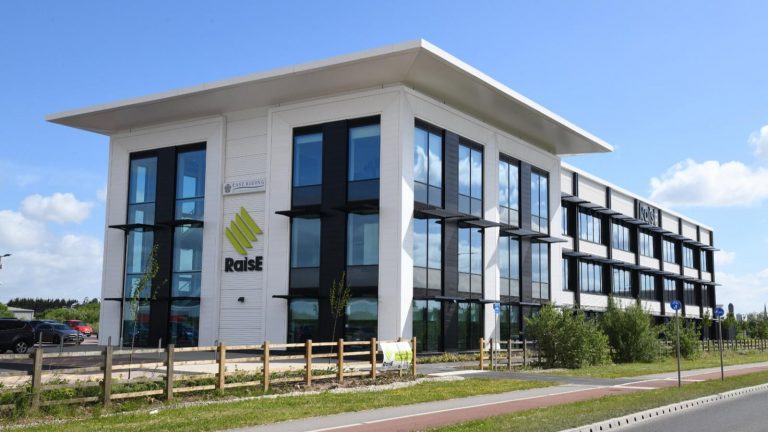122-year-old Keighley toiletries firm sold to skincare specialist
Council backs large-scale HMO despite local objections
A former accountancy office in central Grimsby is set to be converted into an 18-bed house in multiple occupation (HMO) following planning approval from North East Lincolnshire Council. The development, located on Dudley Street, was passed by a narrow margin of five votes to three.
The property will require only six parking spaces, according to the applicant’s agent, due to its central location and access to public transport. However, the project drew criticism from local councillors, who cited concerns over overdevelopment, limited parking on surrounding roads, and the growing concentration of HMOs in the area.
This marks the third HMO on the street, raising further questions around infrastructure strain and long-term impact on community dynamics. Despite opposition, the application was supported because it would meet the growing demand for single-person housing, particularly near town centres.
The decision highlights ongoing tensions between the intensification of urban housing stock and local quality-of-life considerations, particularly in areas already home to similar developments.
British Steel lands five-year Network Rail deal amid national supply push
British Steel has secured a £500 million contract to supply track to Network Rail over the next five years, reinforcing its strategic role in the UK’s domestic infrastructure supply chain. The deal will see the Scunthorpe-based firm continue to supply around 80% of Network Rail’s steel rail requirements.
The contract, which begins on 1 July, is a critical development for the UK’s remaining virgin steel production facility. It guarantees long-term work for British Steel’s Scunthorpe site, home to 2,700 workers and the last operational blast furnaces of their kind in the country.
This follows the UK government’s recent intervention to prevent the site’s closure, after relations broke down with parent company Jingye over concerns that the Chinese owner planned to shutter the blast furnaces. Shutting them down would have eliminated the UK’s capacity to produce virgin steel, raising significant concerns about national security and industrial resilience.
The agreement also comes as the government signals a renewed commitment to strengthening domestic manufacturing through major infrastructure procurement. While British Steel remains in a precarious position, with partial public control but no final decision on nationalisation, the Network Rail deal is seen as a stabilising measure ahead of further industrial strategy announcements later this week.
Workplaces under pressure to prepare for Gen Alpha and neurodivergent talent
UK employers are being urged to make practical workplace changes to better support emerging generations, particularly neurodivergent individuals expected to make up a significant share of the future workforce.
According to new findings from Benenden Health and Neurodiversity in Business, 77% of surveyed HR professionals are already taking steps to adapt office environments and policies with neurodiversity in mind. Recommendations include integrating flexible working patterns, quiet zones, mental health days, and mentorship programmes to foster inclusion and psychological safety.
The report frames these adjustments as essential, not optional, as diagnoses for conditions such as autism continue to rise rapidly. Businesses that fail to evolve their workspaces and culture may struggle to attract and retain the next generation of skilled workers, particularly as expectations for inclusivity and support increase.
While many organisations have made progress, the study highlights the need for ongoing structural and cultural improvements to accommodate a workforce that is not only more diverse but also more vocal about their needs.
Business centres reach near full capacity in East Yorkshire
Business centres across East Yorkshire have reported an average occupancy rate of 92%, underscoring strong demand for flexible workspace in the region. The sites, operated by Invest East Yorkshire under the East Riding of Yorkshire Council, continue to attract startups and SMEs seeking adaptable and affordable accommodation.
Since 1998, the council has provided office and workshop spaces designed to meet the needs of growing businesses. Each unit is offered on flexible terms, allowing companies to scale up or down without long-term commitments or financial penalties. Tenants can also move between centres or exit with just one month’s notice.
The latest occupancy figures underscore the success of this model, which combines convenience, on-site support services, and modern facilities. With multiple sites across the East Riding, the centres play a key role in the region’s economic development strategy, supporting entrepreneurship and business retention through practical infrastructure. For local authorities and developers, it serves as a case study in how public sector investment in flexible commercial property can yield long-term returns and drive regional growth.
Crown Bawtry Collection expands with Rossington Hall acquisition
The Crown Bawtry Collection has acquired Rossington Hall, a 19th-century mansion in South Yorkshire, marking the group’s third hospitality property within a three-mile radius. The venue will be operated as an exclusive hire location for corporate events, weddings, private parties, and high-end staycations.
The acquisition is part of the group’s regional expansion strategy and complements its existing properties: the Crown Hotel Bawtry and Bawtry Hall. The Crown Hotel features 76 rooms, a restaurant, and event facilities, while Bawtry Hall serves as a premium wedding and event venue, with additional accommodation currently under development.
To manage growth across the portfolio, the company has established a new Executive Board and announced a series of senior appointments. These include a Group Corporate Accounts Manager, Group Reservations Coordinator, and a CSR and Partnerships Lead. The group continues to invest in local talent and infrastructure as it scales up operations.
Plans are underway to enhance Rossington Hall’s profile as a flagship venue in northern England, with a focus on supporting the local visitor economy and aligning with regional development hubs, such as Doncaster Airport and Gateway East.
Nottingham accountant accelerates growth with South Yorkshire office
HVAC group expands with acquisition of Europe Air Conditioning
Suffolk-based HVAC provider Climate Care Solutions (CCS) has acquired a majority stake in Bingley-headquartered Europe Air Conditioning (EAC), strengthening its UK market presence.
Established in 2006, EAC offers nationwide design, installation, repair, and maintenance services for heating and ventilation systems. Its client portfolio spans sectors including healthcare, leisure, education, construction, retail, and transport.
This acquisition adds to CCS’s growing network of specialist businesses, which already includes Sapphire Cooling Systems in East Anglia. The group’s strategy centres on integrating technically strong firms with complementary values, while allowing each company to maintain its operational independence.
The transaction was supported by KBS Corporate, with Mackrell Solicitors advising on the sell side and Ansons Solicitors representing the buyer.
This move reflects CCS’s ongoing consolidation efforts within the HVAC sector, targeting regional players with established customer bases and technical expertise.
Bird flu case triggers renewed scrutiny on biosecurity compliance
A new case of highly pathogenic avian influenza (H5N1) has been confirmed at a small poultry farm near Ravensthorpe, West Yorkshire, raising fresh concerns for the sector just weeks after national housing measures were lifted.
The affected farm, which sold eggs and poultry products directly to consumers, housed approximately 60 chickens, 20 ducks, and five geese. All birds on site are being culled, and the Department for Environment, Food and Rural Affairs (Defra) has implemented a 3 km protection zone and a 10 km surveillance zone to contain the spread.
While the mandatory housing order for birds in England was lifted in May, strict biosecurity requirements under the Avian Influenza Prevention Zone (AIPZ) remain in force across England, Scotland and Wales. This incident highlights the ongoing risk and the need for vigilance, particularly for producers operating mixed flocks or selling directly to the public.
The outbreak also arrives as pressure mounts on UK legislators to fast-track legislation for gene editing in farmed animals. A cross-party parliamentary group has called for urgent implementation of provisions under the Genetic Technology (Precision Breeding) Act 2023, citing bird flu as a growing threat that could be mitigated through advanced breeding techniques.
With commercial losses, movement restrictions, and reputational risks at stake, producers and agri-supply chains are advised to reassess contingency plans and biosecurity protocols.
York animal health business expands down under with minority stake in Australian firm
Animalcare Group, a York-based animal health business, has acquired a 25% strategic equity stake in InVetro, an Australian-based Companion Animal health business for £1.4m.
InVetro will utilise the funds to accelerate investment in scaling its commercial footprint, expanding its product portfolio and developing its new product pipeline, with an agreed pathway to increased ownership by Animalcare over time.
The strategic investment expands Animalcare’s presence in the growing Asia-Pacific veterinary market, building on its acquisition of Randlab completed in January 2025.
InVetro is a development-stage Australian veterinary pharmaceutical company committed to advancing Companion Animal care.
Jenny Winter, CEO of Animalcare, said: “This strategic investment expands the Group’s geographic footprint in the large and growing Companion Animal health market.
“The Australian market presents a significant opportunity, and this partnership allows us to participate in that growth with a trusted and capable team already on the ground. We look forward to supporting the business as it transitions into full-scale commercial operations and begins to maximise its potential.”
Corinne Mawson and Zoe Chrysopoulos, directors and founders of InVetro, said: “At InVetro, our mission is to drive innovation in veterinary care and bring next level solutions to clinics across Australia. Our partnership with Animalcare will provide the opportunity to accelerate our portfolio and expand our market penetration.”












